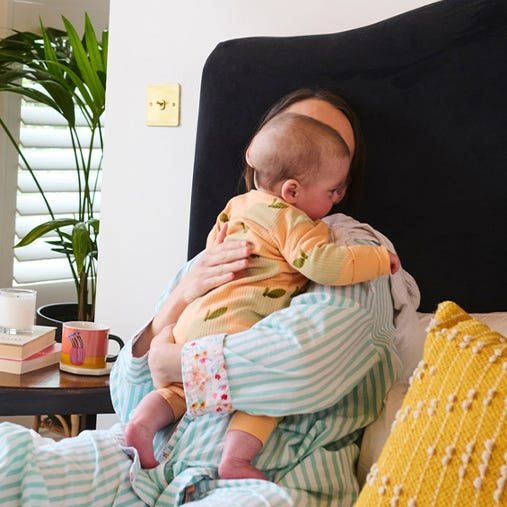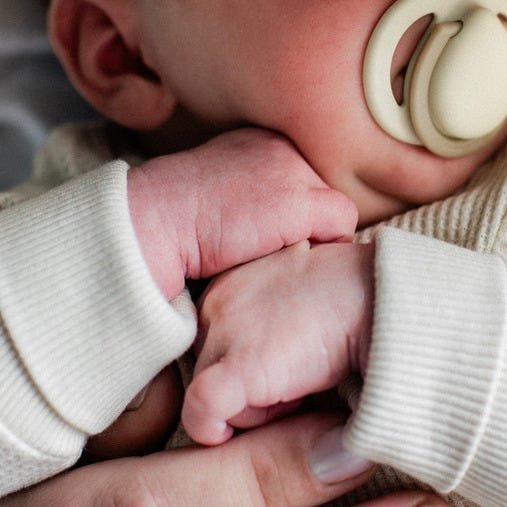First things first, although having a baby with a fever can be worrying and stressful, it's important to note that all little ones get a high temperature from time to time. According to NCT, among parents with children aged between six months and five years, over 60% say their child has had at least one.
Fevers in young children usually subside within three or four days. But for your reassurance and their safety, it's important that you know what a normal baby temperature is, and that you can identify a fever to know if your little one is unwell.
Let's run through what a baby's normal temperature should be, cover the causes and signs of fevers in babies, and learn what you should do if your baby has a fever.
What is a baby's normal body temperature?
The normal average body temperature for a baby is around 97.5 - 99.32°F, depending on the part of their body that you're checking.
You can use a digital thermometer to check your baby's temperature if you suspect they have a fever. A high temperature or fever is usually considered to be anything above 99.5°F.
A baby's body temperature is considered low if it goes below 95°F. A temperature this low can potentially cause a sickness known as hypothermia. You should seek urgent medical attention if you're worried that your baby's temperature is dangerously low.
Signs of a fever in a baby
Your little one may have a high temperature or fever if:
- their back or chest feels hotter than usual when you touch them with the back of your hand
- they feel sweaty
- they have flushed cheeks
- they look unwell or are acting out of character
You may also notice that they shiver or have chills when their temperature is on the rise. When it's falling back to normal, you may see them sweating.
What causes fever in a baby?
A high temperature or fever is a natural response that's triggered by the body fighting against an infection.
Little ones sometimes get a high temperature after having their vaccinations. This is normal and means that their vaccination is working. This type of fever commonly goes away quite quickly, usually within two or three days.
Other causes of a high temperature in babies, children and toddlers include common childhood illnesses like:
- ear and respiratory tract infections
- colds
- influenza
- chickenpox
- tonsillitis
Sometimes, a high temperature in babies is associated with more serious illnesses like meningitis, septicaemia, and pneumonia. If you're worried about your little one's health, you should seek medical advice immediately.
What to do if your child has a fever
In most cases, babies with a high temperature can be cared for at home, and their symptoms usually improve over three or four days.
To help you know how to look after your baby when they have a fever, let's cover what you should and shouldn't do...
| DO'S |
DON'TS |
- Do contact your doctor for medical advice if you're worried about your little one or their symptoms aren’t improving. After all, you know your baby best!
- Do speak to a pharmacist and ask them about medicine that can help.
- Do make sure your little one is getting plenty of fluids. Also look out for signs of dehydration including crying with fewer tears, having significantly fewer wet diapers, or having a dry mouth.
- Do check on them regularly during the night and while they sleep.
- Do keep them at home. If possible, don't let them come into contact with other people until their temperature returns to normal.
- Do keep them comfortable and layer them in a lightweight blanket so that their body can expel excess heat if they’re shivering.
|
- Don’t layer them up in too many clothes or bedding.
- Don’t give aspirin to children under 16 years of age.
- Don’t combine ibuprofen and acetaminophen unless it has been recommended by your doctor.
- Don’t give paracetamol to your baby if they’re under two months old or under three months old and weigh below 5kg.
- Don’t give ibuprofen to a baby or toddler with asthma or chickenpox unless it's been recommended by your doctor.
- Don’t undress your child or sponge them down to cool them, as this can cause them more discomfort.
- Don’t try to make them eat if they have a reduced appetite.
|









